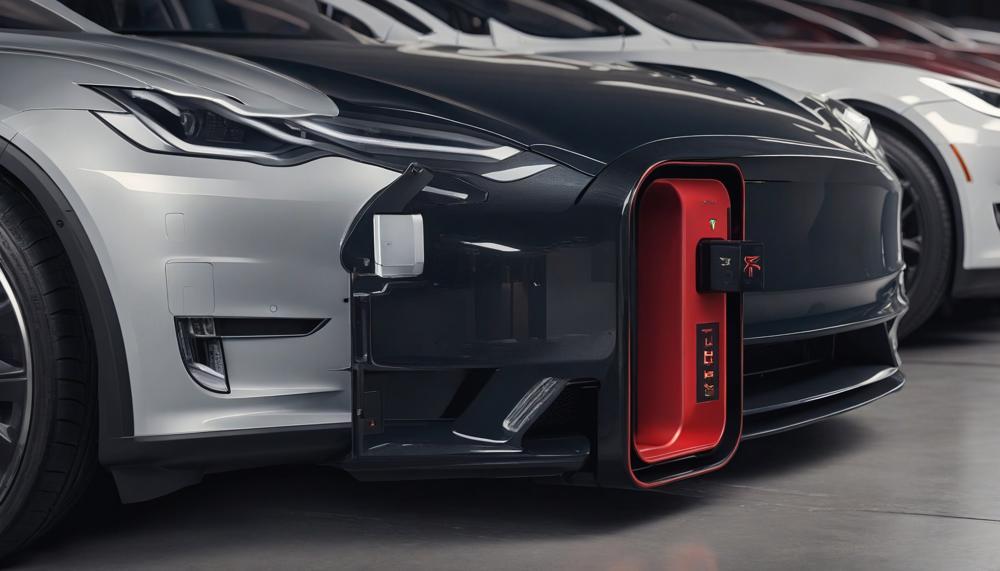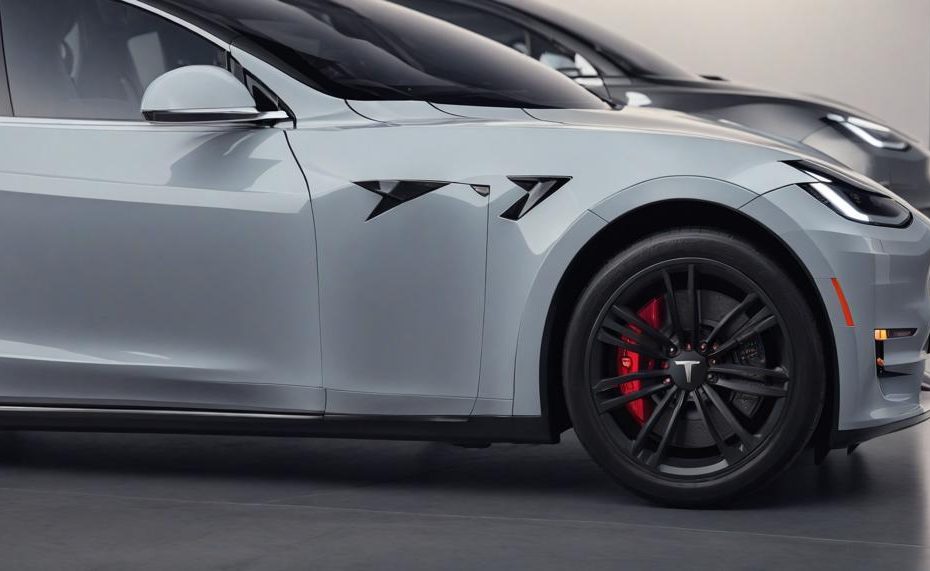When it comes to charging your Tesla, understanding the amperage of the charger is essential for ensuring efficient and safe charging. Yes, the amperage varies depending on the Tesla model. For instance, the Model 3 Rear-Wheel Drive uses a 32-amp charger, whereas other models typically use a 48-amp charger.
To achieve optimal charging, a 40-amp circuit breaker is necessary for the Model 3 Rear-Wheel Drive, while a 60-amp circuit breaker is recommended for other models.
Key Takeaways:
- Model 3 Rear-Wheel Drive: Uses a 32-amp charger; requires a 40-amp circuit breaker.
- Other Tesla Models: Typically use a 48-amp charger; a 60-amp circuit breaker is recommended.
- Charging Speed: A 50-amp breaker can add 29 miles of range per hour for a Model S.
- Optimal Charging: Avoid using a 30-amp breaker as it will result in slower charging speeds.
Understanding these details helps you choose the right setup for faster and more efficient charging of your Tesla.
Contents
- 1 Tesla Home Charging Options
- 2 How to Charge a Tesla at Home
- 3 How Long Does It Take to Charge a Tesla at Home?
- 4 Cost to Charge a Tesla at Home
- 5 Is It Cheaper To Charge a Tesla at Home Than at a Supercharger Station?
- 6 Can You Install a Tesla Supercharger at Home?
- 7 Why Level 2 EV Charger Is the Best for Home Charging?
- 8 Conclusion
Tesla Home Charging Options
Tesla offers several home charging options that cater to different needs and setups. Below are the primary charging solutions available for Tesla owners:
Mobile Connector
The Mobile Connector comes with every new Tesla and is a convenient option for standard charging. It can be plugged into a standard 120-volt household outlet for Level 1 charging or a 240-volt outlet for faster Level 2 charging.
Wall Connector
The Wall Connector is a hardwired home charging solution that offers faster charging speeds than the Mobile Connector.
It is recommended for daily use and can be installed indoors or outdoors. The Wall Connector supports up to 48 amps, which significantly reduces charging time.
NEMA Adapters
Tesla provides various NEMA adapters for different outlet types. These adapters allow the Mobile Connector to plug into different 240-volt outlets, providing flexibility and faster charging compared to a standard 120-volt outlet.
Third-Party Chargers
While Tesla recommends using their chargers for optimal performance and safety, third-party chargers that meet specific requirements can also be used. These chargers must support the J1772 standard, which Tesla vehicles can connect to using an adapter.

Charging Speeds and Recommendations
- Tesla Model 3: The Rear-Wheel Drive model has a 32-amp onboard charger, while other models support up to 48 amps. A 40-amp circuit breaker is suitable for the Model 3 Rear-Wheel Drive, whereas other models benefit from a 60-amp breaker.
- Tesla Model S and X: These models can support higher amperages, with the potential to gain around 29 miles of range per hour with a 50-amp breaker. A 60-amp breaker is recommended for faster charging.
Installation Considerations
- Electrical Requirements: Installing a Wall Connector typically requires a certified electrician to ensure proper setup and compliance with local codes. A dedicated circuit is essential for safe and efficient charging.
- Location: Consider the installation location for ease of access and protection from the elements if installed outdoors.
- Breaker Size: Using the correct size circuit breaker is crucial. Under-sizing can lead to slower charging, while over-sizing without proper wiring can pose safety risks.
How to Charge a Tesla at Home
When charging a Tesla at home, it is crucial to ensure the correct amperage to optimize charging speed and safety.
| Model | Recommended Amperage | Circuit Breaker |
| Model 3 Rear-Wheel Drive | 32 amps | 40-amp circuit breaker |
| Other Tesla Models | 48 amps | 60-amp circuit breaker |
Adjusting the Amperage:
Vehicle Settings:
Access the charging settings on your Tesla’s touchscreen. Navigate to ‘Charging’ and select the appropriate amperage based on your home electrical setup.
Wall Connector Adjustment:
If using a Tesla Wall Connector, set the amperage via the dip switches inside the unit. Detailed instructions can be found in the Wall Connector installation manual or Tesla’s support page.
Electrician Configuration:
Have a licensed electrician install the correct circuit breaker. For Model 3 Rear-Wheel Drive, a 40-amp breaker is needed, while other models require a 60-amp breaker to achieve optimal charging speeds.
Properly configuring the amperage not only ensures efficient charging but also maintains the longevity and safety of your electrical system.
How Long Does It Take to Charge a Tesla at Home?
The charging time for a Tesla at home varies significantly depending on the type of charger used. For example:
- Level 1 AC Charger (120V): This standard household outlet is the slowest, taking up to 40 hours for a full charge.
- Level 2 AC Charger (220-240V): Using a Tesla Wall Connector or similar setup, a full charge can take between 6 to 12 hours, depending on the vehicle model.
How Does the Charging Time for a Tesla at Home Compare to Other Electric Vehicles?
When comparing Tesla charging times to other electric vehicles (EVs), it’s essential to consider the charger type and vehicle battery capacity. Here’s a detailed comparison:
| Charger Type | Tesla | Other EVs (e.g., Nissan Leaf, Chevrolet Bolt) |
| Level 1 AC (120V) | 30-40 hours | 35-50 hours |
| Level 2 AC (220-240V) | 6-12 hours | 8-12 hours |
| Level 3 DC Fast Charging | 20-40 minutes (up to 80%) | 30-60 minutes (up to 80%) |
Cost to Charge a Tesla at Home
The cost to charge a Tesla at home depends on several factors, including the model of the Tesla, the capacity of the battery, the local electricity rates, and the efficiency of your home charging setup.
Tesla Models and Battery Capacities:
Tesla offers various models, each with different battery capacities. For example, the Model 3 Standard Range Plus has a 54 kWh battery, while the Model S Long Range has a 100 kWh battery.
Electricity Rates:
The cost per kilowatt-hour (kWh) of electricity varies significantly depending on your location. In the US, the average cost is around $0.13 per kWh, but this can range from as low as $0.09 in some states to over $0.30 in others.
Calculating the Cost:
To estimate the cost of charging a Tesla, you can use the following formula:
[ \text{Cost} = \text{Battery Capacity (kWh)} \times \text{Electricity Rate (per kWh)} ]
For example, charging a Model 3 Standard Range Plus with a 54 kWh battery at an electricity rate of $0.13 per kWh:
[ \text{Cost} = 54 \, \text{kWh} \times \$0.13 \, \text{per kWh} = \$7.02 ]
Charging Efficiency:
Not all the electricity drawn from the grid is stored in the battery due to charging inefficiencies. Typically, the efficiency is around 85-90%. Thus, you should consider this factor as well:
[ \text{Adjusted Cost} = \frac{\text{Battery Capacity (kWh)}}{\text{Efficiency}} \times \text{Electricity Rate (per kWh)} ]
Assuming 90% efficiency:
[ \text{Adjusted Cost} = \frac{54 \, \text{kWh}}{0.90} \times \$0.13 = \$7.80 ]
Example Costs for Different Models:
| Tesla Model | Battery Capacity (kWh) | Cost at $0.13 per kWh | Adjusted Cost (90% efficiency) |
| Model 3 Standard Range Plus | 54 kWh | $7.02 | $7.80 |
| Model S Long Range | 100 kWh | $13.00 | $14.44 |
| Model X Plaid | 100 kWh | $13.00 | $14.44 |
| Model Y Long Range | 75 kWh | $9.75 | $10.83 |
Is It Cheaper To Charge a Tesla at Home Than at a Supercharger Station?
The short answer is yes, it is generally cheaper to charge a Tesla at home than at a Supercharger station.
Cost Differences
Charging a Tesla at home typically costs around $0.13 per kWh, based on the national average electricity rate in the U.S. For a 75 kWh battery with 90% efficiency, this equates to about $8 for a full charge. Conversely, using a Tesla Supercharger averages $0.28 per kWh, costing approximately $21 for the same full charge.
Comparative Costs at Different Amperage Levels
| Amperage Level | Charging Speed | Cost to Charge at Home (75 kWh Battery) | Cost to Charge at Supercharger (75 kWh Battery) |
| Level 1 (120V, 12A) | 3 miles per hour | $8 | $21 |
| Level 2 (240V, 16-80A) | 8-60 miles per hour | $8 | $21 |
| Level 3 (DC Fast Charger, 200-400A) | Up to 100 miles in 15 minutes | N/A (Not typically installed at home) | $21 |
Can You Install a Tesla Supercharger at Home?
The short answer is no, you cannot install a Tesla Supercharger at home. Superchargers are Tesla’s high-speed, direct current Level 3 chargers, designed for rapid charging at public stations. They can replenish around 300 miles of range in about an hour, but they are not available for residential installation.
Here’s why:
- Electrical Requirements: Most homes lack the necessary electrical infrastructure to support Level 3 charging. Upgrading to meet these requirements can be incredibly costly, potentially running into tens of thousands of pounds.
- Local Regulations: Many local and county codes prohibit the installation of such high-powered equipment in residential areas, primarily due to safety and infrastructure concerns.
- Tesla’s Policy: Tesla does not sell their Superchargers for private use, making it impossible for individuals to purchase and install one at home.
Given these constraints, the practical alternative for home charging is a Level 2 charger. These chargers use alternating current (AC) and can fully charge a Tesla overnight, providing the same 300 miles of range but at a much slower rate compared to Superchargers. Level 2 chargers are more suited for residential use due to their lower power requirements and simpler installation process.
| Option | Description | Availability |
| Level 3 Supercharger | High-speed, direct current charger that replenishes 300 miles of range in about an hour | Not available for residential installation |
| Level 2 Charger | Alternating current charger that replenishes 300 miles of range overnight | Available for residential installation |
Why Level 2 EV Charger Is the Best for Home Charging?
The Level 2 EV charger is the most suitable option for home charging of a Tesla vehicle due to its perfect balance between speed, convenience, and cost.
A Level 2 charger, operating at 240 volts, provides a significant upgrade over the standard Level 1 charger, which uses a regular 120-volt household outlet. This increased voltage allows for much faster charging times, making it feasible to fully charge a Tesla overnight. Here are key reasons why a Level 2 charger is ideal:
Faster Charging Times:
| Charger Type | Charging Rate | Time to Full Charge |
| Level 1 (120V) | 3-5 miles of range per hour | 24-48 hours |
| Level 2 (240V) | 15-30 miles of range per hour | 6-8 hours |
With a Level 2 charger, you can add about 15-30 miles of range per hour. This efficiency ensures your Tesla is fully charged by morning, even if you start with a nearly empty battery.
Cost-Effective Solution:
Level 2 chargers are more affordable compared to the high costs associated with DC fast chargers and Tesla Superchargers, which are not viable for home installation due to their expense and regulatory hurdles.
Installing a Level 2 charger at home typically costs between £500 and £1,500, including both the unit and professional installation.
Convenience and Practicality:
Charging your Tesla at home with a Level 2 charger is incredibly convenient. It eliminates the need for frequent trips to public charging stations and allows for easy overnight charging. Moreover, many Level 2 chargers come with smart features, such as scheduling and remote monitoring via apps, adding further convenience.
Enhanced Battery Health:
Frequent use of DC fast chargers can accelerate battery degradation.
Level 2 charging is slower but gentler on the battery, promoting better long-term health and performance for your Tesla.
Widespread Compatibility:
Level 2 chargers are widely compatible with all electric vehicles, not just Tesla.
This ensures that if you ever switch to a different EV brand, your home charging setup remains useful.
Conclusion
Charging your Tesla efficiently and safely hinges on understanding the amperage requirements of your vehicle. Different Tesla models have specific charging needs: the Model 3 Rear-Wheel Drive uses a 32-amp charger and requires a 40-amp circuit breaker, while other models typically utilize a 48-amp charger, necessitating a 60-amp breaker. These configurations ensure optimal charging speeds and prevent electrical issues.
Tesla offers several home charging options to cater to varying needs. The Mobile Connector, which comes standard with all new Teslas, provides convenient charging using a standard 120-volt outlet for Level 1 charging or a 240-volt outlet for faster Level 2 charging. For even quicker charging, the Wall Connector supports up to 48 amps and is recommended for daily use, offering substantial time savings. Additionally, Tesla’s NEMA adapters and compatible third-party chargers provide flexibility for various outlet types and charging needs.
Proper installation of these systems, ideally done by a licensed electrician, is crucial. This ensures the correct circuit breaker size and safe operation. Moreover, configuring the amperage via the vehicle’s settings or the Wall Connector’s dip switches can optimize charging efficiency.





